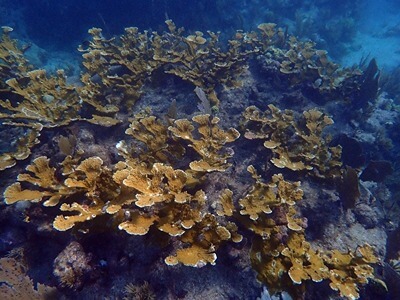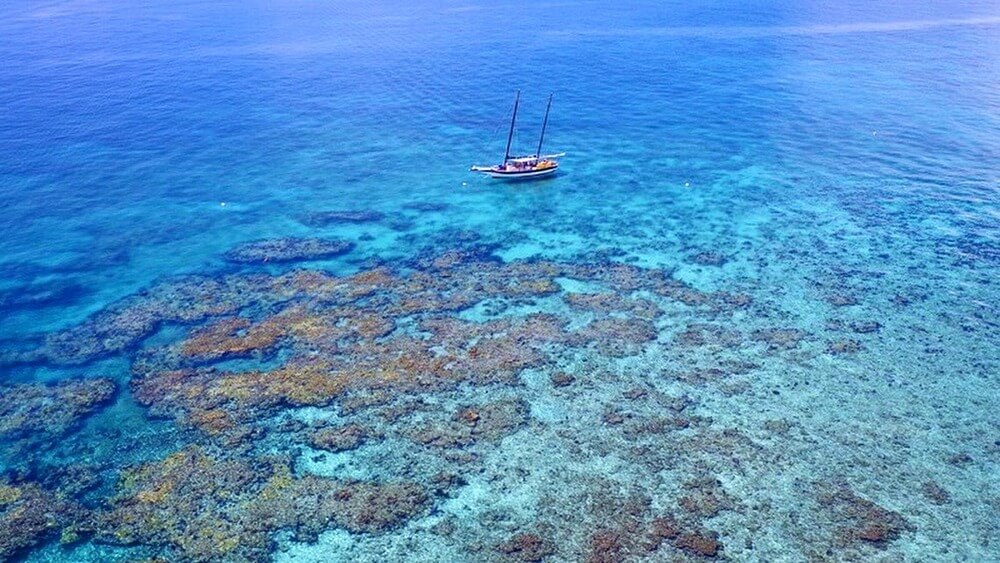Habitat Protection and Management

Conservation Issue
The marine environment of Florida Keys National Marine Sanctuary (FKNMS) is characterized by complex, interconnected habitats that support over 6,000 species and provide critical ecosystem services to humans. Understanding the status and trends of these habitats, linkages between habitats, and potential changes due to changing to ocean conditions is critical to the effective management of FKNMS resources.
Description
Extensive, interconnected hard bottom, seagrass, algal, mangrove, sand and rubble, and coral reef habitats found within FKNMS provide enumerable ecosystem services to humans, including food, jobs, shoreline protection, revenue from tourism, and a host of other cultural, recreational, and commercial opportunities. While each habitat type plays a specific role in the ecosystem of the Florida Keys, their coastal protection services and importance as habitat, feeding, and nursery grounds for associated species are greatly improved through functional linkages among these habitats, provided that these linkages are intact and healthy. Furthermore, connectivity of these habitats is critical for the transfer of materials, nutrients, and energy, as well as the movement of different life stages of invertebrates and fishes. A high degree of connectivity can enhance the capacity for habitats to be resilient.
In addition to large-scale declines observed within coral reefs, associated habitats (e.g., seagrass, mangrove, and shallow-water hard bottom) are experiencing localized declines from a suite of anthropogenic stressors and changing to ocean conditions. While extensive coral reef, seagrass, and water quality monitoring has occurred in the Florida Keys since at least 1996, changes to certain functional and keystone species are less understood, and monitoring is very limited in other habitat types. Furthermore, the implications of localized losses or degradation of these habitats on other habitats and on commercially and ecologically important species that move between habitats are not known. Because most of the organisms that create these habitats can respond more rapidly to management actions than corals, there is a need to understand the population dynamics of each community’s constituents, as well as their functional significance to the ecosystem. There is also a critical need to understand linkages between habitats and the role of these habitats in reducing impacts from changing ocean conditions and other threats.
Data and Analysis Needs
- Characterization of the status and trends of hard bottom, seagrass, and mangrove habitats, the threats affecting these habitats, the spatial and temporal extent and severity of these threats, and the effectiveness of existing management measures at protecting these habitats
- Identification of the functional significance of hard bottom, seagrass, algal, and mangrove habitats and how each habitat type affects other associated habitats, including coral reefs
- Characterization of the spatial trends in commercially harvested sponge populations, the impacts of sponge fisheries and declining water quality, and options for restoration of associated hard bottom habitats
- The role of sponges in improving water quality and providing habitat for certain life stages of fishes and invertebrates, and options to use sponges to enhance habitat quality in reefs (e.g., stabilizing rubble zones to enhance coral restoration)
- The role of each of these communities in the life cycles of reef fishes and motile invertebrates and how protection enhances survival of different life stages and their movement between habitats
- Identification of the most important mangrove and seagrass habitats in the Florida Keys, in terms of their role in protecting coastal areas from storms, stabilizing shorelines, preventing erosion, filtering water, and maintaining water quality and clarity, as well as additional protection/restoration necessary to maximize these ecosystem services
- Identification of the spatial scale of injury to these habitats from vessel impacts and actions to minimize impacts and enhance their protection
Potential Products
- High resolution aerial/satellite imagery of habitat types
- Predictive modeling of changing to ocean conditions and influences on Florida Keys marine habitats
- Updated conceptual model of habitat type linkages and increased monitoring of those ecosystem components
- Data visualization and decision support tool that collates habitat information from a variety of monitoring programs, is routinely updated, and allows resource managers and the public to quickly understand habitat change patterns at different spatial scales

For more information about this assessment, contact Andy.Bruckner@noaa.gov.

